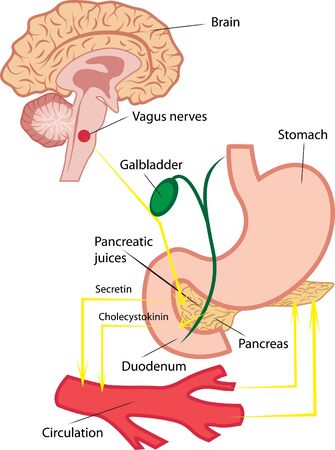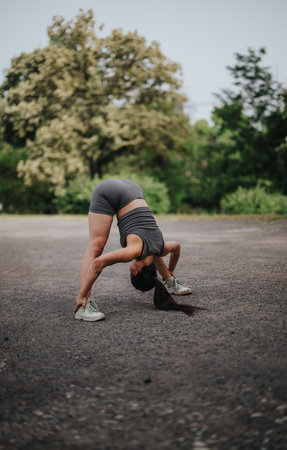Introduction
In the United Kingdom, sports and extracurricular activities hold a prominent place in both community life and individual well-being. From grassroots football clubs to school-based drama societies, participation in these activities is woven into the fabric of daily living. This active engagement not only fosters social connections and personal growth but also plays a vital role in health and rehabilitation processes. For individuals recovering from injuries, whether sustained on the pitch or through everyday accidents, reintroducing sports and extracurricular pursuits can be an essential part of their recovery journey. This article explores the unique significance of these activities within the UK context, highlighting how they contribute to physical healing, mental resilience, and overall quality of life following injury.
2. Common Injuries and Their Impact
In British schools, universities, and community sports clubs, participation in physical activities is widely encouraged due to its many health and social benefits. However, these settings also present a variety of injury risks that can significantly affect recovery processes. Understanding the most common injuries and their implications is essential for supporting individuals during rehabilitation.
Typical Injuries in British Sports and Extracurricular Activities
Sports such as football, rugby, hockey, netball, and cricket are staples in the UK’s extracurricular landscape. Each activity carries its own set of typical injuries, which often overlap but may require different approaches to recovery. The table below summarises some of the most frequently encountered injuries in these environments:
| Sport/Activity | Common Injuries | Potential Challenges During Recovery |
|---|---|---|
| Football & Rugby | Ankle sprains, knee ligament tears (ACL/MCL), concussions | Extended time off pitch, psychological impact of reinjury fears, gradual return-to-play protocols |
| Hockey & Netball | Wrist fractures, shoulder dislocations, muscle strains | Limited mobility affecting daily tasks and academic responsibilities, need for supervised rehabilitation |
| Cricket | Finger fractures, back strains (especially bowlers), overuse injuries | Long recovery periods impacting team involvement, potential for recurrent issues without proper rest |
The Broader Impact of Injury on Recovery
The impact of these injuries extends beyond the initial physical trauma. For students and young athletes in the UK, time away from both sport and studies can affect self-esteem, social connections, and even academic performance. Community-based programmes may face additional challenges due to limited access to specialised medical support or rehabilitation facilities.
Psycho-Social Considerations in British Contexts
The communal nature of sport in Britain means that injury can also disrupt a sense of belonging and routine. Many young people rely on extracurricular activities for stress relief and social interaction; thus, recovering from an injury often involves addressing not only physical but also emotional well-being.
The Importance of Early Intervention and Support Networks
Recognising the multifaceted impact of common sports injuries is key to effective recovery. Prompt intervention by coaches, teachers, parents, and healthcare professionals—along with clear communication between all parties—can help ease the transition back to activity while minimising long-term consequences.

3. Physical Benefits of Participation During Recovery
Engaging in sports and extracurricular activities during the recovery phase can offer substantial physical benefits, provided the involvement is tailored to the individuals specific injury and stage of rehabilitation. Rather than complete rest, which may sometimes lead to muscle atrophy or joint stiffness, guided participation encourages gentle movement and progressive loading, both of which are crucial for restoring strength and flexibility. Activities such as swimming, yoga, or modified team sports can be particularly advantageous, as they allow for low-impact exercise while still promoting cardiovascular health and muscular endurance.
In the UK, physiotherapists often recommend a gradual return to activity under professional supervision. This approach not only maintains baseline fitness but also supports better circulation and quicker healing through increased blood flow to injured tissues. Importantly, continued involvement in physical activities—be it light training sessions with a local club or participating in adapted PE lessons at school—helps prevent secondary complications like weight gain or reduced mobility that might otherwise hinder long-term recovery.
Moreover, structured extracurricular engagement offers an opportunity to monitor progress in a supportive environment, where adjustments can be made based on real-time feedback from healthcare professionals. By keeping the body active within safe parameters, patients are more likely to regain their previous level of function and return to their usual routines with confidence and resilience.
4. Psychological and Social Advantages
Engaging in sports and extracurricular activities after an injury offers a multitude of psychological and social benefits that are crucial to the overall recovery process. During rehabilitation, individuals often face emotional challenges such as frustration, anxiety, and a sense of isolation. Participation in structured activities can significantly counteract these negative feelings by providing a sense of purpose and routine.
Mental Well-being and Motivation
Taking part in group activities or adapted sports has been shown to boost mental health by releasing endorphins, reducing stress, and improving mood. This positive impact on well-being can enhance motivation, helping individuals stay committed to their recovery plans. Being surrounded by peers with similar experiences also encourages perseverance through setbacks and plateaus commonly encountered during rehabilitation.
Community and Peer Support
The social environment fostered through extracurricular engagement is particularly valuable within the UK context, where community spirit and camaraderie play a vital role in daily life. Joining local clubs or support groups allows injured individuals to connect with others who understand their journey, creating opportunities for shared learning, encouragement, and friendship. Such interactions can help reduce feelings of loneliness and promote a more positive outlook towards recovery.
Summary Table: Key Psychological & Social Benefits
| Benefit | Description | UK Context Example |
|---|---|---|
| Mental Well-being | Improves mood, reduces anxiety and stress levels | Participating in local walking groups across British parks |
| Motivation | Keeps individuals focused on their goals during setbacks | Setting personal milestones within community football clubs |
| Community Support | Fosters belonging and shared understanding among peers | Involvement in village cricket teams or charity events |
| Peer Interaction | Encourages learning from others’ experiences and mutual support | Joining NHS-supported rehabilitation peer groups |
Ultimately, integrating sports and extracurricular activities into the recovery journey not only supports physical healing but also strengthens psychological resilience and builds meaningful social connections—an essential aspect of holistic well-being in the UK’s community-oriented culture.
5. Practical Adaptations and Support in the UK
Recovering from an injury does not mean giving up on your favourite activities. Across the UK, a variety of support systems and practical adaptations are available to help individuals remain engaged with sports and extracurricular pursuits during rehabilitation. These resources are designed to promote physical and emotional well-being while respecting each person’s unique journey.
Specialist Rehabilitation Centres
The NHS offers access to specialist physiotherapy and occupational therapy services that focus on personalised recovery plans. Many local hospitals and community health centres run rehabilitation programmes, often incorporating adapted physical activities tailored to your stage of recovery. These may include hydrotherapy sessions, adapted gym equipment, or structured group exercises under professional supervision.
Inclusive Sports Clubs
Across the UK, numerous sports clubs actively promote inclusivity for individuals recovering from injury or living with long-term conditions. Football clubs, for instance, frequently offer walking football sessions suitable for those with limited mobility, while local leisure centres provide adapted swimming lessons or gentle yoga classes. The English Federation of Disability Sport (EFDS) and similar organisations can connect you to appropriate activities in your area.
University and Community Initiatives
Many universities and community centres have wellbeing officers or disability support teams who can recommend extracurricular activities suited to various abilities. Programmes such as social walking groups, art therapy workshops, or adaptive cycling schemes are widely available and encourage social interaction alongside physical engagement.
Financial and Emotional Support
The UK also offers financial assistance for accessing adaptive equipment or transport through schemes like Access to Work or Disabled Students’ Allowance. Charities such as Mind, Headway, and Scope provide emotional support groups and helplines for those coping with the psychological impact of injury.
Staying Connected During Recovery
Maintaining participation in sports or hobbies—even in a modified form—can make a significant difference to motivation and mental health. By taking advantage of these UK-based adaptations and support networks, individuals can continue pursuing what they love while progressing safely towards full recovery.
6. Personal Stories and Case Studies
Real-life experiences often provide the most compelling evidence for the benefits of sports and extracurricular activities in recovery after injury. Across the UK, schools, local clubs, and even public figures have demonstrated how engagement in such activities can significantly enhance the rehabilitation process. For example, many secondary schools in England have developed inclusive after-school sports programmes that support students returning from injuries. One notable case is St. Georges School in Manchester, where a Year 10 student recovering from a broken leg was gradually reintroduced to physical activity through the schools adapted football sessions. With tailored support from teachers and physiotherapists, he not only regained his physical strength but also rebuilt his confidence to participate fully in school life.
Clubs across the UK also play a pivotal role. The London Falcons Football Club, for instance, has worked with athletes recovering from ACL injuries by offering modified training plans and peer support groups. Their approach ensures that injured players stay connected with their teammates, which helps reduce feelings of isolation and fosters a positive outlook during the recovery period. Many members have reported faster progress and increased motivation compared to tackling rehabilitation alone.
Public figures further highlight these positive outcomes. Dame Sarah Storey, Britain’s most successful Paralympian, has openly discussed how her involvement in competitive cycling after an early injury in swimming transformed her rehabilitation experience. Her story underscores how sports can be a vehicle for both physical healing and personal growth, inspiring countless individuals facing similar challenges.
These examples from various UK contexts illustrate that integrating sports or structured extracurricular activities into recovery plans doesn’t just promote physical healing—it also provides emotional support and a sense of belonging. Whether through school initiatives, community clubs, or role models in public life, real-life stories continue to reinforce the transformative impact of staying active on the road to recovery.
7. Conclusion and Recommendations
Recovering from injury can be a challenging journey, but engaging in sports and extracurricular activities has been shown to play a positive role in both physical rehabilitation and emotional wellbeing. As highlighted throughout this article, structured activities not only aid in rebuilding strength and coordination, but also help boost confidence and social connections among young people.
Key Insights
- Returning to sport or activity after injury requires careful planning and clear communication between healthcare professionals, parents, schools, and the young person themselves.
- Gradual reintroduction—starting with low-intensity involvement—ensures that recovery is not compromised while still providing the social and psychological benefits of participation.
- Schools and clubs should foster an inclusive environment where students feel supported, regardless of their physical ability during recovery.
Recommendations for Patients
- Listen to your body and follow medical advice closely. If pain or discomfort arises, communicate promptly with your healthcare provider.
- Be patient with your progress; celebrate small milestones as you rebuild your skills and fitness.
Advice for Parents
- Encourage open dialogue with your child about their feelings, concerns, and achievements during recovery.
- Work collaboratively with teachers and coaches to adapt participation levels appropriately.
Guidance for Schools
- Create flexible opportunities for all pupils to get involved in activities, including non-contact roles or supportive tasks during recovery periods.
- Promote a culture where safety comes first and no one feels pressured to return before they are ready.
Final Thoughts
A safe, well-supported return to sports and extracurricular activities can greatly enhance the overall recovery experience after injury. By working together—patients, families, and educational communities—we can help ensure that every young person enjoys the lifelong benefits of active participation while minimising risks. Supporting each other along the way leads not only to better physical outcomes but also fosters resilience, teamwork, and a lasting love for healthy living.


